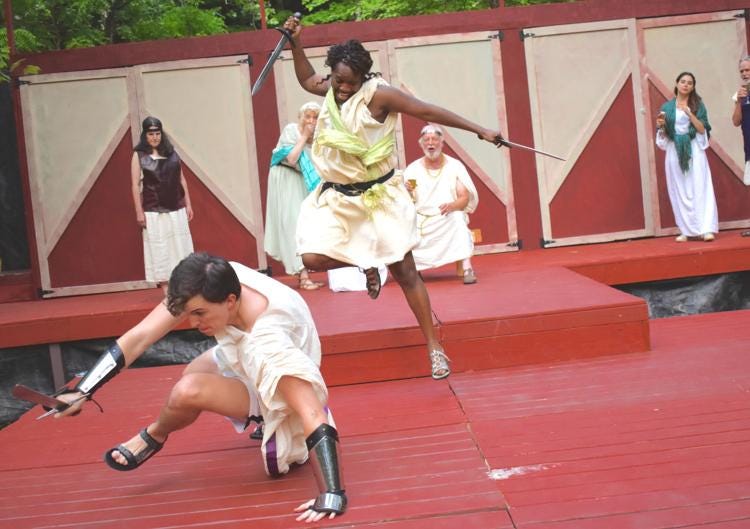
“You did beautiful work!! Thank you for working within so many restrictions and creating something so magical.” – Director, Hadestown: Teen Edition
I had a grand total of ~3 hours over the course of two days this month to work with over a dozen tweens and teenagers on a bit of violence that takes place in Hadestown. The director had told me that some of the dance choreography had been a challenge for the group, so she was concerned about the complexity of staging a safe bit of essentially mob violence against Orpheus, but also recognized that the show needed something meaningful, and that it was an opportunity to help the kids learn what safe practices on set feel like, in the hope that they will be more able to identify and object to unsafe circumstances in the future.
Allow me to pause for a little bit of personal context: When I’d been doing stage combat for ~10 years, I wanted every fight I was involved in to look like a scene from a Hollywood/Hong Kong action setpiece, with increasing levels of technical challenge that left the audience with their jaws on the floor (from amazement, not sword-related accidents). If an actor couldn’t do what I’d hoped they could physically, I’d modify the choreography accordingly, but I always started maximal and then scaled back as needed. After another decade and change of teaching others and choreography, my approach has changed, for three reasons:
Actors have egos. That’s not just a knock on actors, we all want to feel good about our work, and if someone consistently starts by pushing us beyond our capabilities and then says “okay, we can dumb it down for you,” that’s demoralizing.
Most audiences can only follow so much. If your main goal is to convey the sense of chaos in combat, okay, by all means, do some elaborate wirework, introduce complex, deceptive techniques with third-level intention, and frequent partner-switching. But the likelihood is that the audience will check out of the story, seeing it as just rapid movement, rather than feeling the impact of each moment.
Rehearsal time is limited. Any time that you spend working on elements that DON’T make the cut is (more or less) wasted, and you only have so much time to work on things before
So here are the changes:
Keep reading with a 7-day free trial
Subscribe to Intellectual Odyssey to keep reading this post and get 7 days of free access to the full post archives.

